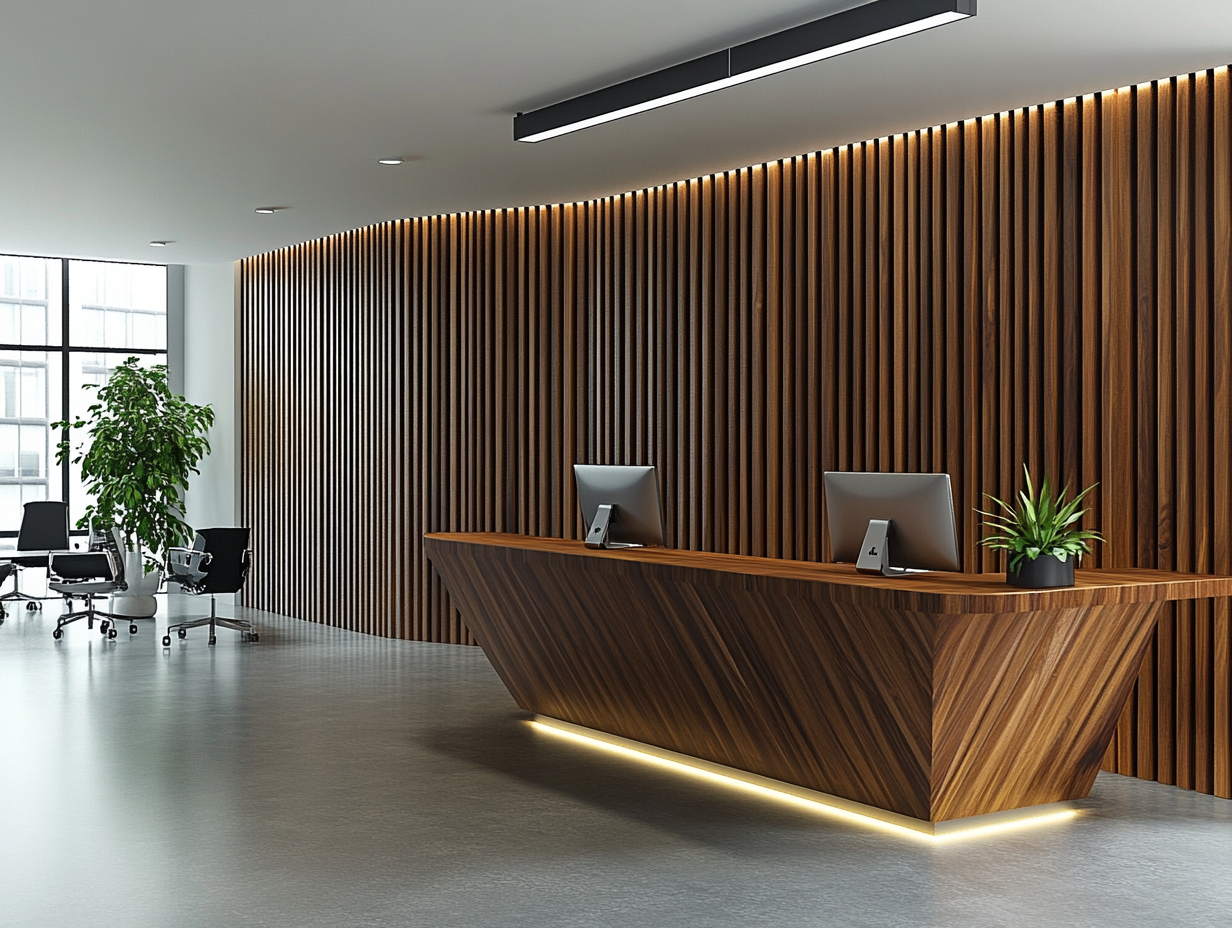
Natural Wooden Acoustics Solutions

Say Goodbye to Echoes: How Wooden Acoustic Panels Create Perfect Sound
Achieving optimal sound quality within a space isn’t just about having high-end audio equipment. It’s fundamentally about managing the room’s acoustics – how sound waves interact with the surfaces around them. Poor acoustics lead to echoes, reverberation, and muddy sound clarity, detracting from music, conversations, and overall enjoyment. Imagine trying to enjoy a delicate piano piece in a cavernous hall, or struggling to understand a speaker at a conference due to overwhelming echoes. This is where wooden acoustic panels enter the scene, offering an elegant and effective solution.
The Science Behind Wooden Acoustic Absorption
Wooden acoustic panels work on the principle of sound absorption. Sound waves are energy, and when these waves strike a hard, reflective surface, they bounce back, creating echoes and reverberation. Acoustic panels, particularly those made of wood, are designed to absorb a significant portion of this energy. This absorption happens through a combination of mechanisms:
Porous Absorption: The porous nature of many wood types, especially when combined with fabrics or other absorbent materials behind the panel, allows sound waves to penetrate the surface. The sound energy is then converted into a negligible amount of heat as it travels through the material.
Panel Vibration: Certain panel designs, particularly those with a thin wooden face and an air cavity behind, vibrate in response to sound waves. This vibration absorbs energy, reducing the sound reflected back into the room.
Diffusion (in some designs): While primarily absorbers, some textured or shaped wooden panels can also diffuse sound waves, scattering them in different directions to create a more even sound field and prevent unwanted standing waves.
The effectiveness of a wooden acoustic panel depends on several factors, including the type of wood used, its thickness, the size and design of perforations or slots (if any), and the type of backing material.
Why Choose Wood? The Benefits Beyond Acoustics
While various acoustic panel materials exist, wood offers unique advantages that make it a popular choice for both residential and commercial spaces:
Aesthetic Appeal: Wood brings a natural warmth and elegance to any environment. Wooden panels are available in a wide range of finishes, grains, and colors, allowing them to seamlessly integrate with existing décor. Unlike some purely functional acoustic solutions, wooden panels enhance the visual appeal of the room.
Sustainability: Wood, especially when sourced from sustainably managed forests, is a renewable resource. Choosing FSC-certified wood ensures that the panels are produced responsibly, minimizing environmental impact.
Durability and Longevity: Wood is a durable material that can withstand the test of time. Wooden acoustic panels are resistant to wear and tear, ensuring a long-lasting acoustic solution.
Versatility: Wooden acoustic panels can be used in a variety of applications, from home theaters and recording studios to offices, restaurants, and classrooms. They can be mounted on walls, ceilings, or even suspended as baffles.
Customization: Wood is highly customizable, allowing for unique designs and sizes to perfectly fit the specific acoustic needs and aesthetic preferences of a space.
Selecting the Right Wooden Acoustic Panel for Your Space
Choosing the right wooden acoustic panel requires careful consideration of several factors:
Room Size and Shape: Larger rooms generally require more acoustic treatment than smaller rooms. The shape of the room also influences sound reflection patterns.
Intended Use: The primary purpose of the space (e.g., home theater, office, restaurant) will determine the desired level of acoustic control. A recording studio, for example, requires more extensive treatment than a living room.
Frequency Range: Different materials and panel designs are more effective at absorbing certain frequencies. Consider the dominant frequencies you want to control. For example, low-frequency bass sounds often require thicker, more substantial panels.
Panel Design and Appearance: Choose panels that complement the existing décor and contribute to the overall aesthetic of the space. Consider factors such as wood species, finish, and perforation patterns.
Acoustic Performance Specifications: Look for panels with published Noise Reduction Coefficient (NRC) ratings. The NRC indicates the amount of sound energy a panel absorbs, ranging from 0.0 (total reflection) to 1.0 (total absorption).
Consulting with an acoustic specialist can help you determine the optimal type, placement, and quantity of wooden acoustic panels needed to achieve your desired sound quality.
Installation and Maintenance: A Simple Process
Installing wooden acoustic panels is generally a straightforward process. Many panels are designed for easy mounting using common hardware. The installation method will vary depending on the panel type and the surface to which it is being attached. It’s important to follow the manufacturer’s instructions carefully.
Maintenance is also simple. Regular dusting or vacuuming with a soft brush attachment is usually sufficient to keep the panels clean and looking their best. Avoid using harsh chemicals or abrasive cleaners, as these can damage the wood finish.
Transform Your Space with the Sound of Perfection
Wooden acoustic panels are more than just a functional solution for controlling sound. They are an investment in creating a more comfortable, productive, and enjoyable environment. By absorbing unwanted echoes and reverberation, wooden panels improve speech intelligibility, enhance music clarity, and create a sense of calm and focus. From home theaters to offices to restaurants, wooden acoustic panels offer a stylish and effective way to transform any space into a haven of perfect sound.